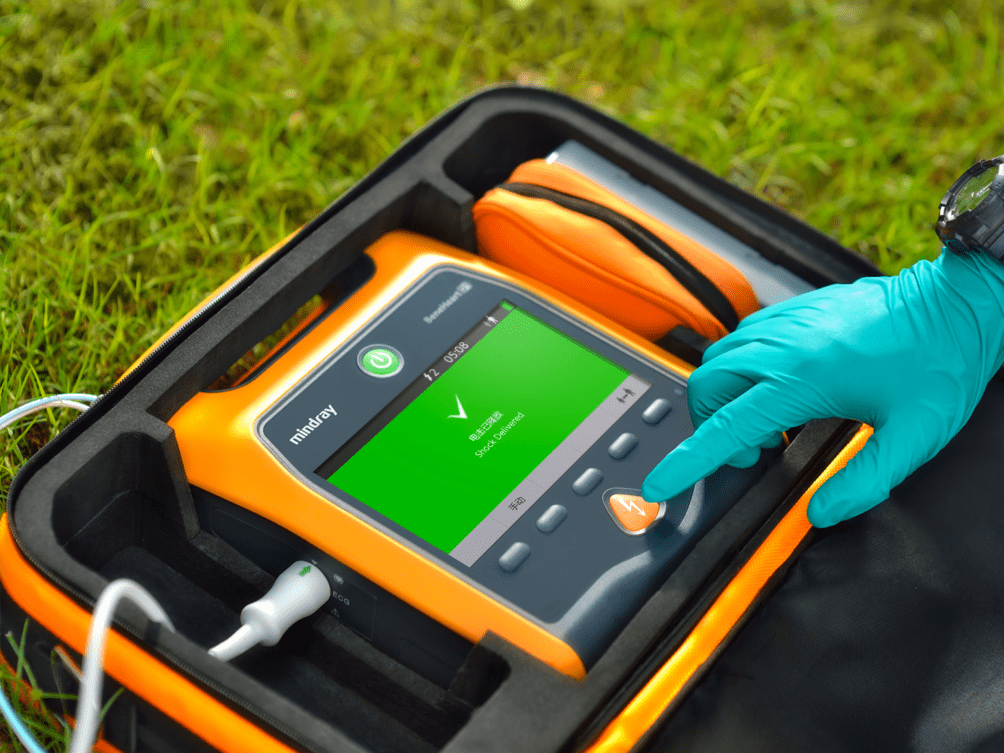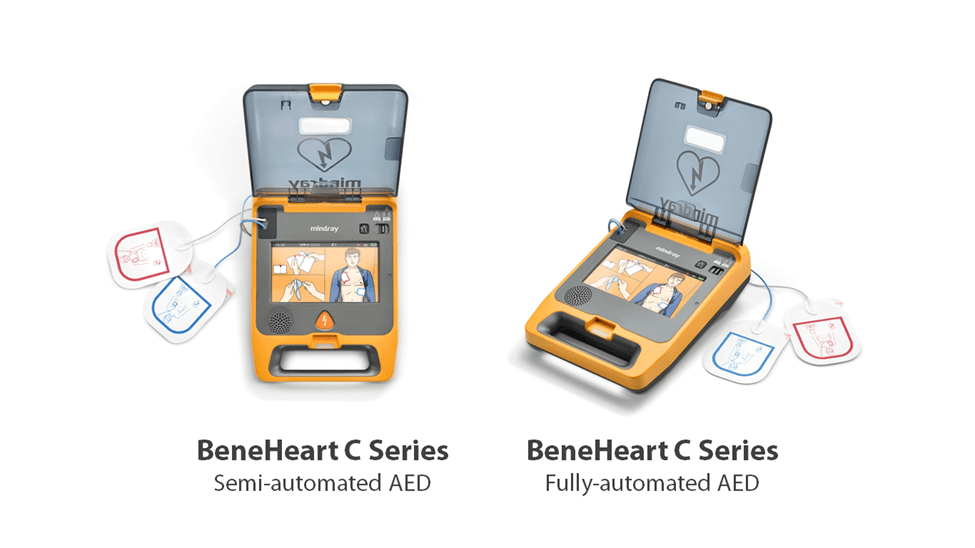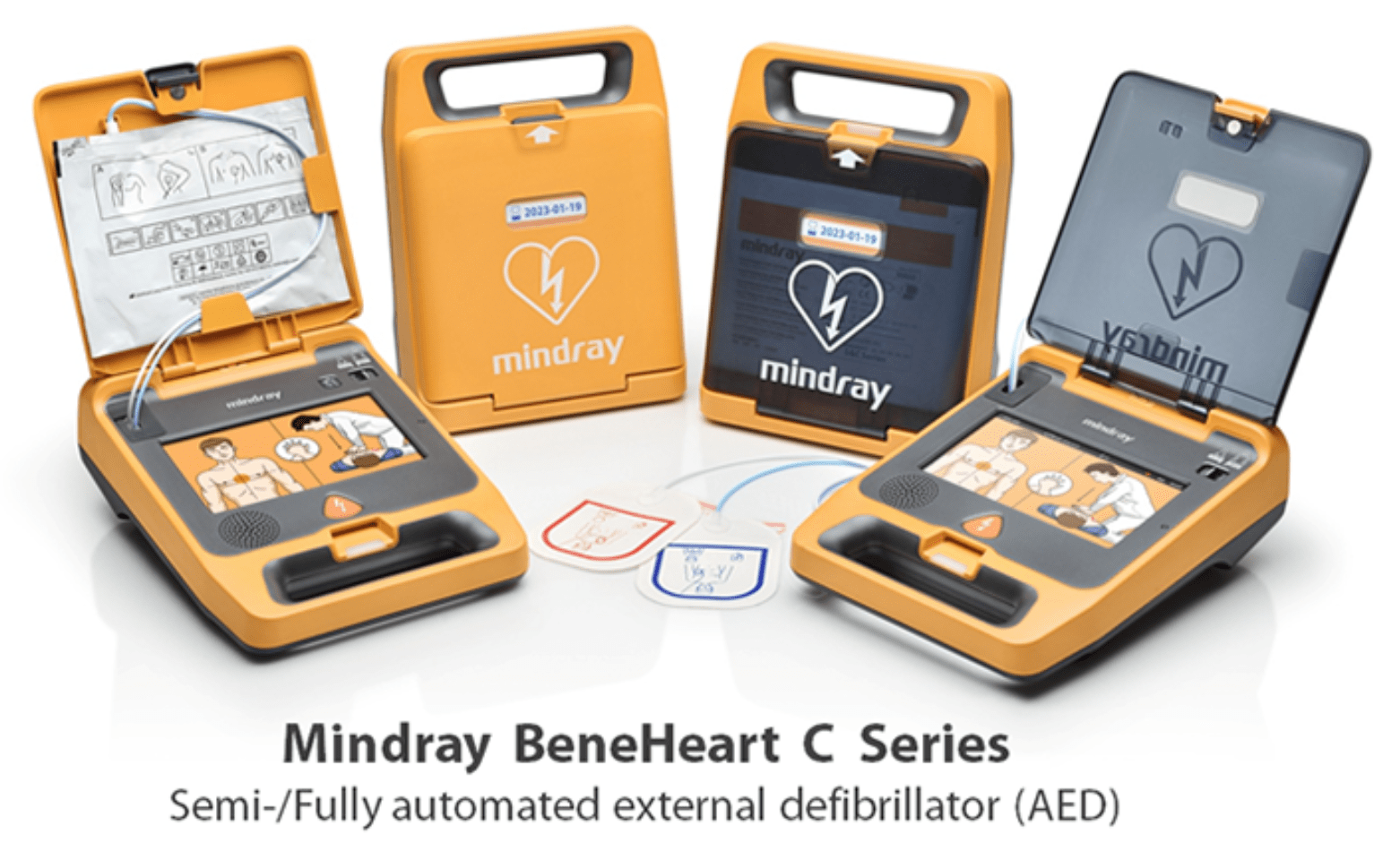Automated external defibrillators are essential tools in every paramedic’s equipment. An AED is a portable, battery-powered device that transfers electric shocks through the heart, assisting in the restoration of its regular rhythm.
It is effective in the event of sudden cardiac arrest (SCA), ventricular fibrillation, and ventricular tachycardia [1]. Thanks to its accessibility and capacity to rapidly provide medical assistance, it is regarded as a best life-saving choice for SCA cases in public space.
There are two main categories of AEDs, fully automated AED and semi-automated AED. Here below, we are presenting their differences, discussing each type’s qualities and potential drawbacks.
1. Discharge button
A fully automated AED, unlike semi-automated ones, does not incorporate an activation switch, also known as the “discharge button”. Immediately after the electrode pads are applied onto the patient’s chest, the fully automated AED self-activates, detecting whether defibrillation is needed. If the intervention is necessary, electric shocks will be transferred through the heart with no required of further human actions.
On the opposite, a semi-automated AED has a built-in discharge button that, once pushed it initiates the shock. This version needs to be manually operated to deliver the shock to the patient’s heart. As a result, the human operator has the control over the shock delivery, which in some circumstances can be very important.

2. Accessibility and Utilization
Fully automated AEDs have multiple advantages. In terms of accessibility, they can be controlled by a person with minimal experience, as they work independently without pressing any buttons. Considering that they take just a few seconds to activate, they reduce the rescuers’ stress and are ideal for emergencies [2].
While people are highly recommended to undergo specific training programs on how to operate a semi-automated AED, it is not as complicated as someone may believe. This version can prompt the user to apply the pads on the patient’s chest, to keep enough distance, and to perform the defibrillation by pushing the button when necessary. The user is just asked to follow step by step the instructions to deliver the electrical shock.
If there is no need for intervention, the machine will not advise touching the button. Some devices come with voice commands; others have both voice and on-screen prompts. The AED box “tells” to the operators what to do next, instructing them when to perform each action.
3. Price
Although it is not significant, for some brands, there is a difference in pricing between the two versions. The difference usually is around $100, which, compared to the cost of the machinery itself, is not high. As for batteries, pads, and other accessories, both machines share the same price.

More information on AEDs
AEDs are particularly designed for public access use during first aid because of their simple utilization. It has been employed for decades and earned their place in public spaces thanks to healthcare campaigns supported by NGOS, non-profits, and local health organizations like the American Red Cross.
When using an AED, the operator must warn people surrounding the patient (especially in public spaces) to maintain their distance. Although the vast majority of AEDs inform bystanders not to stay near after the pads are placed, it may still be dangerous if attention is not paid.
The Good Samaritan laws [3] of the United States declare that anyone can operate an AED in goodwill without being considered liable for any loss or damage to a person’s health. Whether a professional or inexperienced user, AED can significantly improve the chances of patient survival [4].
AED brands like Mindray provide a great selection of fully and semi-automated AEDs. They assure high performances of their devices that function correctly during emergencies, providing precise guidance to rescuers through the CPR process.
References:
[1] Services, U. D. (n.d.). Defibrillators. Retrieved from National Heart, Lung, and Blood Institute: https://www.nhlbi.nih.gov/health-topics/defibrillators
[2] DamirErkapic, T. B. (2013). Cardiac Defibrilliation. In T. B. DamirErkapic, Cardiac Defibrilliation (pp. 6-7). Books on Demand.
[3] State Laws on Heart Attacks and Defibrillators. (2002, August). Retrieved from Library of Congress: http://webarchive.loc.gov/all/20021016123247/http://www.ncsl.org/programs/health/AED .htm
[4] Barnaby, B. J. (2007, June 15). “Do It Yourself: The Home Heart Defibrillator.” Retrieved from The New York Times: https://www.nytimes.com/2005/05/03/business/do-it-yourself-the-home-heart-defibrillator.html


